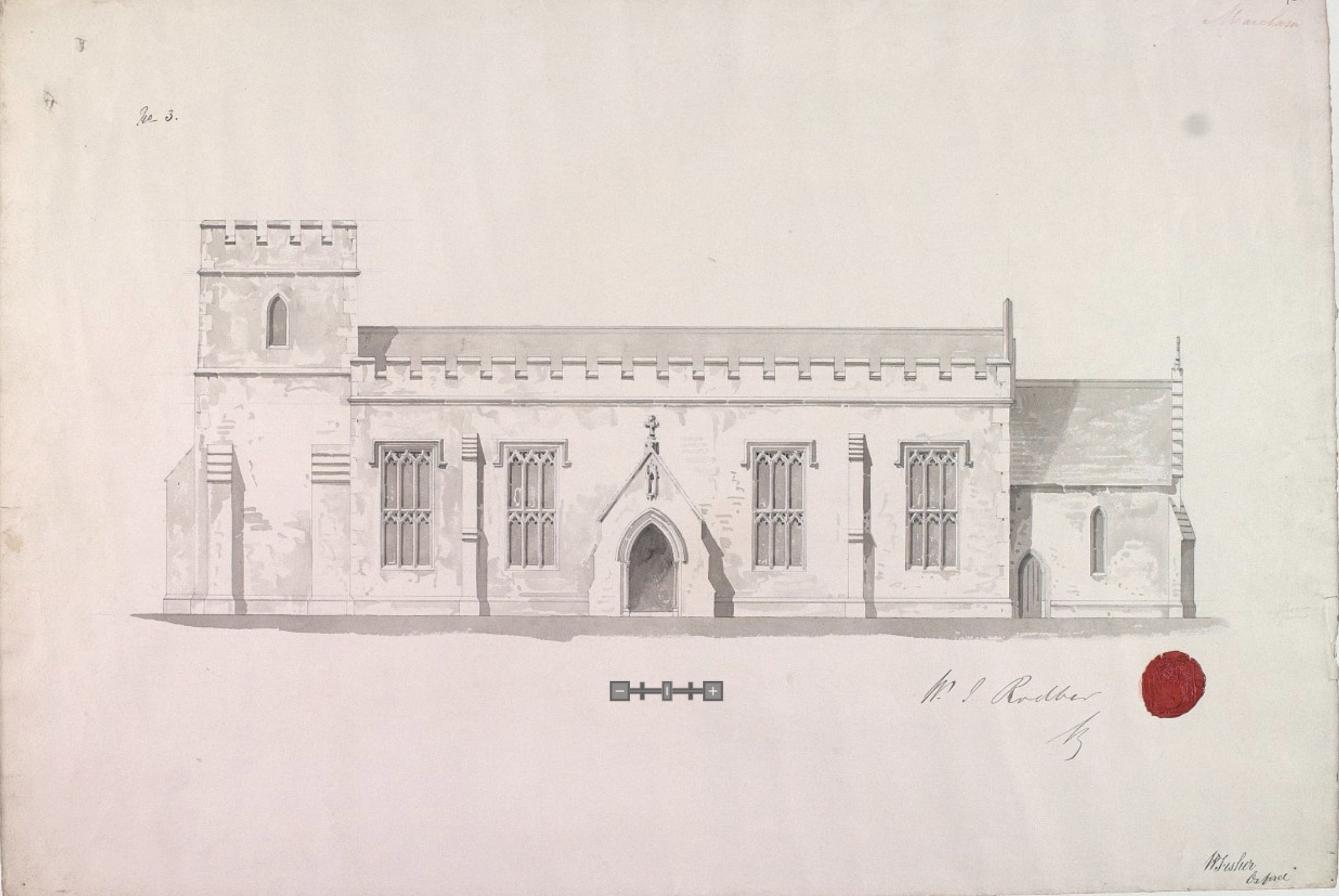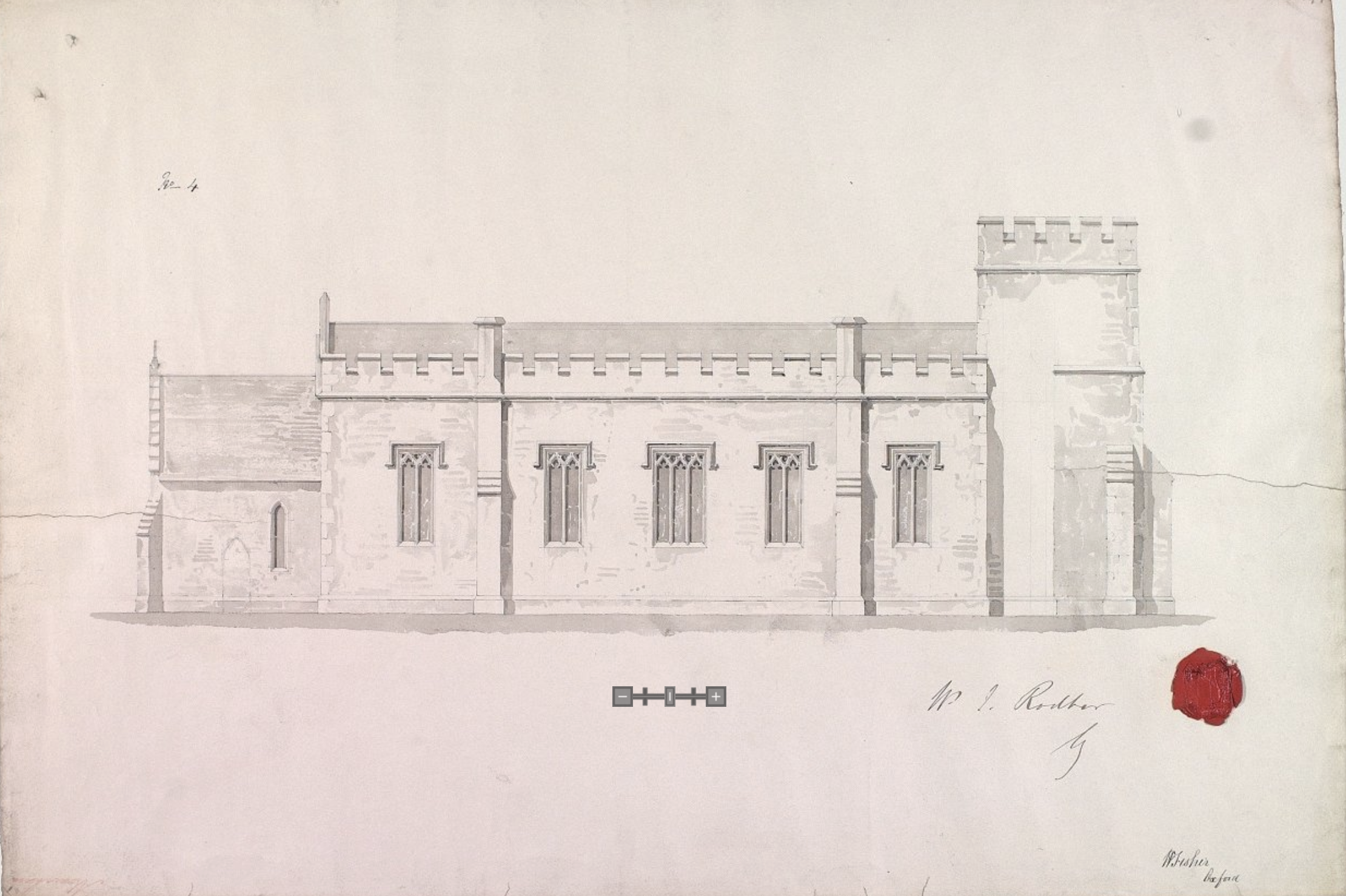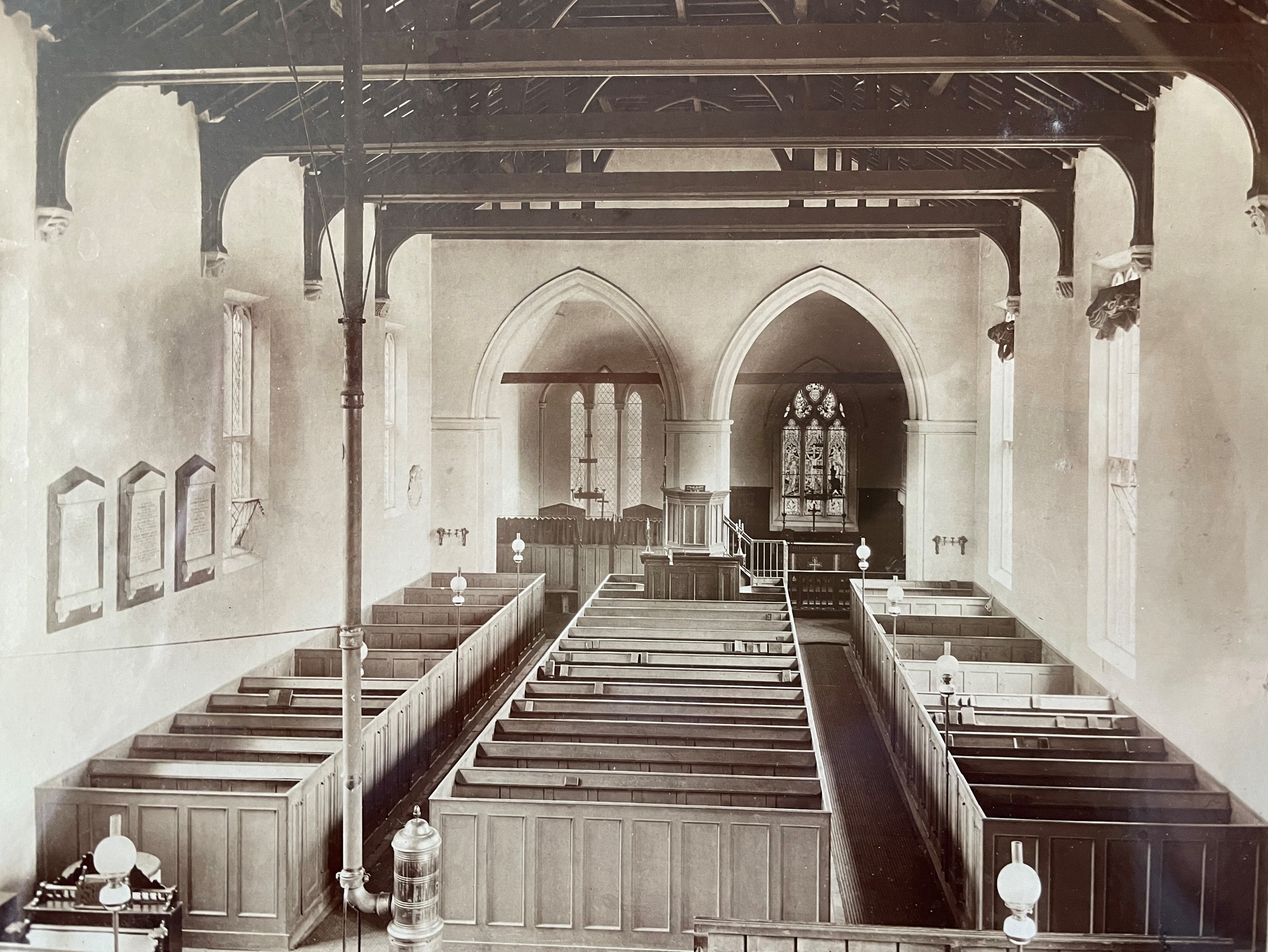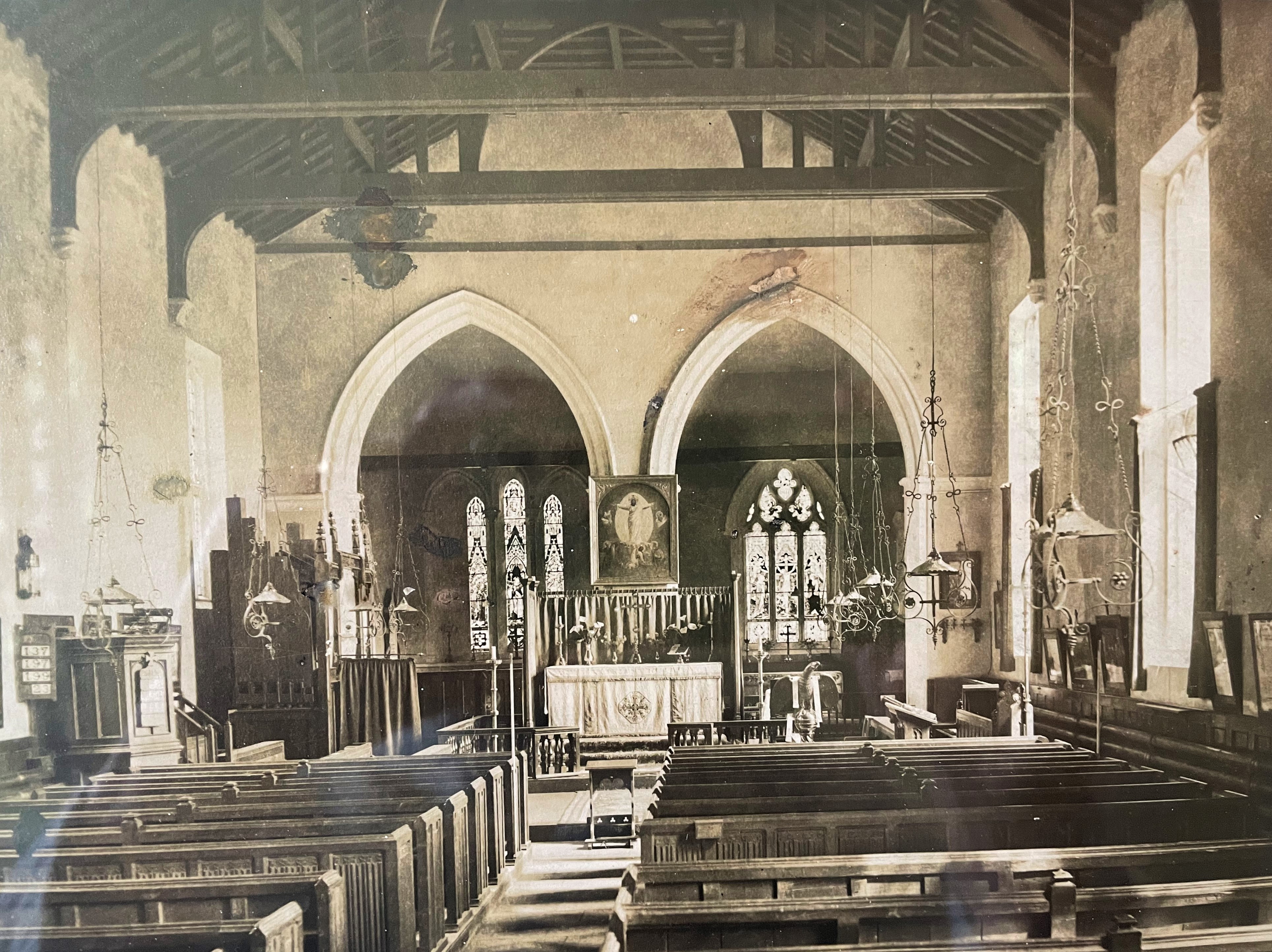The History of All Saints’ Church Marcham
There has been a church on this site since before the Norman Conquest, and it is mentioned specifically in Domesday Book (1086). The estate of Marcham had been granted to Abingdon Abbey in the Anglo-Saxon period: Marcham was head of the Marcham Hundred (where the hundred court was held) and the church here may have been an Anglo-Saxon Minster (a ‘mother church’ which served a network of small churches in the surrounding area). Christ Church Oxford became the patron of the living shortly after the dissolution of the monasteries in 1538, and still is today.
However, the first Romano-British Christians in the locality probably worshipped at the important religious centre at the crossing of the River Ock on the road to Wantage. Temples and associated buildings there date back to before the Iron Age: Christian burials have been excavated in the late Roman-British and early Anglo-Saxon cemetery. Later in the Anglo-Saxon era this site was totally abandoned and the religious and administrative focus moved a half-mile NE to the Anglo-Saxon village of Marcham.
The site of All Saints’ was high status: the church and the manor are close neighbours in a slightly elevated position. The church is built in a large round mounded churchyard (now walled) which has been closed since c.1900. The churchyard is managed by the Parish Council along conservation guidelines, in order to encourage wildlife and to provide an attractive and peaceful setting for the church. The Marcham and Frilford Joint Burial Committee administers the nearby cemetery (accessed from the footpath to Frilford leading from the NW corner of the churchyard). The large yellow house by the south gate was once the rectory: the current modern vicarage in North St. is the successor of three former vicarages in Church St.
All Saints’ was originally built of locally quarried Corallian Rag, and was largely rebuilt in the late 1830s in the Perpendicular Gothic style. There are drawings by Buckler of the old church in 1819, and these show a dilapidated building in a mixture of architectural styles. The architect of the restoration was William Fisher of Oxford: he retained the thirteenth century tower, some of the stone flooring and windows, and the south porch. The overall footprint of the church stayed much the same, as did the position of most of the walls. However, the medieval interior was transformed into a high, light and airy space in the style of a Georgian meeting house, with visual emphasis on the nave and the pulpit. The Gothic revival had already started, and this is one of the latest examples of Georgian taste in church interiors. The west tower, of early 13th-century date, is three stages high and has a ring of six bells.




All Saints’ has not been altered externally since the rebuild but there have been at least 2 major internal re-orderings. Within the last 45 years the church has been modernized while at the same time repairs have been needed to roofing and stonework. At the west end there are toilets and a kitchen, as well as meeting spaces.
All Saints’ church preserves an eclectic mixture of architectural and decorative styles past and present. It is a living church whose members seek to take care of a historical monument while they share the Gospel of Christ with the community of today.
All Saints' Churchyard
The churchyard was closed by 'Order of Council in 1901, therefore there have been no burials here since then, but instead they have taken place in Marcham Cemetery, accessible by the path in the north west corner of the churchyard.
Records
If you are seeking records about relatives buried after 1902, please contact the parish clerk on clerk@marchamparishcouncil.gov.uk. If you are seeking information about burials before that date, we suggest you try the Bershire Records Office as we only hold the most recent registers before transferring them there for safe-keeping. https://www.royalberkshirearchives.org.uk/
If you are looking for information about baptisms and funerals then we have records from 1993 onwards in the church. Please be aware that a set of registers were stolen with a safe in 1993, so any baptism & wedding records for 1991-1993 and burial records for 1943-93 are missing.
If you have any queries or would like to visit the church, please do not hesitate to get in contact with Tamsin on info@allsaintsmarcham.org or Nick on vicar@allsaintsmarcham.org and we will do what we can to help.